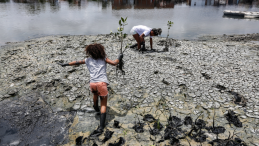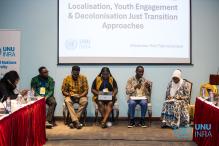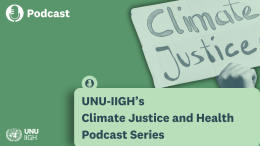Amid mounting fiscal pressures and rising climate volatility, how can global financial flows be structured to deliver stable, country-driven transitions in the years ahead?
This Spring Meetings lunch session brought together experts and policymakers to explore practical ways to scale up climate finance to at least $1.3 trillion per year by 2035, as called for at COP29. Hosted by Perry World House at Penn in Washington, this discussion highlighted emerging tools and partnerships to meet that target while addressing deep structural challenges.
UNU-CPR’s Dr. Michael Franczak and Dr. Koko Warner of the International Organization for Migration advanced a new framework for operationalizing innovative finance through transformation packages—concrete, full-spectrum financial strategies tailored to national conditions. These packages combine fiscal tools (like green subsidies) and monetary instruments (like concessional loans and guarantees), sequenced to crowd in private capital and stabilize transitions over time.
Drawing on real-world examples—from South Africa’s JET-P to newer deals in Senegal and Vietnam—the discussion examined the promises and pitfalls of current climate finance models. It underscored how delivery gaps, institutional bottlenecks and the high cost of capital can hinder the effectiveness of large-scale packages, especially when social support and energy security are underfunded.



